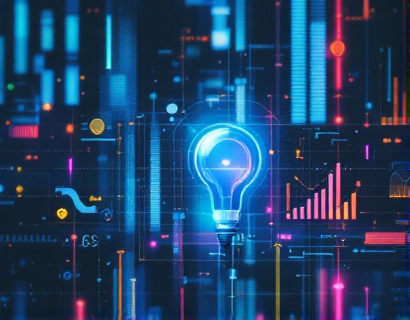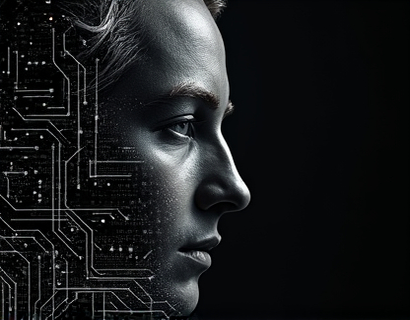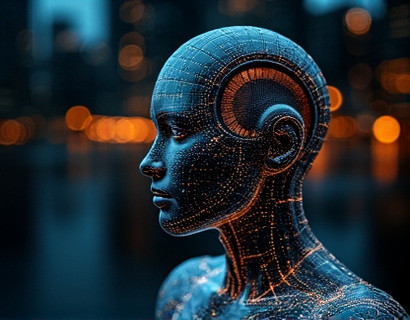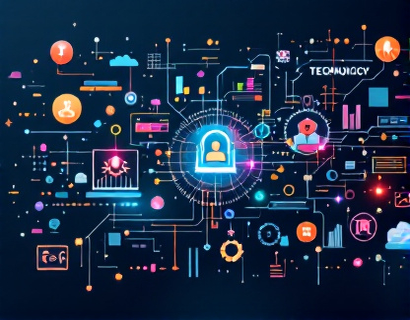Unlocking Enhanced Digital Experiences: Leveraging Crypto and AI for Next-Gen Transformation
The digital landscape is rapidly evolving, driven by technological advancements that promise to redefine how businesses operate and interact with users. At the forefront of this transformation are two revolutionary technologies: cryptocurrency and artificial intelligence (AI). By merging these forces, organizations can unlock unprecedented potential, enhancing both their internal processes and user experiences. This comprehensive guide aims to provide tech leaders with actionable insights on how to harness the power of blockchain and AI for next-generation digital transformation.
Understanding the Synergy Between Crypto and AI
To fully leverage the benefits of combining cryptocurrency and AI, it's essential to understand the fundamental principles of each technology. Cryptocurrency, built on blockchain technology, offers a decentralized, secure, and transparent method for transactions. It eliminates the need for intermediaries, reducing costs and increasing efficiency. On the other hand, AI leverages machine learning and data analytics to automate complex tasks, provide insights, and create personalized experiences.
The synergy between these technologies lies in their complementary strengths. Blockchain provides a secure and transparent environment for AI to operate, ensuring data integrity and trust. Conversely, AI can enhance blockchain's capabilities by optimizing processes, predicting trends, and improving user interactions. Together, they create a powerful ecosystem that can drive significant advancements in digital transformation.
Enhancing Security and Trust with Blockchain
One of the most significant advantages of integrating blockchain into digital solutions is the enhancement of security and trust. Blockchain's decentralized nature means that data is stored across a network of computers, making it extremely difficult for any single entity to manipulate or hack. This inherent security feature is crucial for businesses handling sensitive information, such as financial data, personal identifiers, and intellectual property.
AI can further bolster these security measures by detecting and mitigating threats in real-time. Machine learning algorithms can analyze patterns and identify anomalies, alerting systems to potential security breaches before they occur. This proactive approach to security ensures that user data remains protected, fostering greater trust in digital platforms.
Optimizing Operations with AI
AI's ability to automate and optimize processes can significantly streamline business operations. By automating routine tasks, AI frees up human resources to focus on more strategic and creative endeavors. This not only increases efficiency but also reduces the likelihood of human error, leading to higher quality outcomes.
For instance, in supply chain management, AI can predict demand, optimize inventory levels, and streamline logistics. By analyzing historical data and real-time market trends, AI algorithms can make informed decisions that enhance operational efficiency and reduce costs. This level of optimization is particularly valuable in industries where timing and accuracy are critical.
Personalizing User Experiences with AI
In the digital age, user experience (UX) is paramount. AI-driven personalization can transform how businesses interact with their customers, providing tailored experiences that meet individual needs and preferences. By analyzing user behavior, AI can recommend products, content, and services that resonate with each user, increasing engagement and satisfaction.
For example, in e-commerce, AI can curate personalized shopping experiences by suggesting items based on past purchases, browsing history, and even emotional context. This level of personalization not only enhances user satisfaction but also drives higher conversion rates and customer loyalty.
Leveraging Cryptocurrency for Decentralized Applications
Cryptocurrency enables the development of decentralized applications (dApps) that operate on blockchain networks. These dApps offer a range of benefits, including increased transparency, reduced transaction costs, and greater user control. By leveraging cryptocurrency, businesses can create innovative solutions that empower users and reduce reliance on centralized authorities.
One prominent example is the use of cryptocurrency in gaming. Decentralized gaming platforms allow players to own and trade in-game assets as non-fungible tokens (NFTs), creating a more equitable and rewarding experience. This model not only enhances user engagement but also opens up new revenue streams for developers.
Building Trust Through Transparency
Transparency is a core value of blockchain technology, and when combined with AI, it can significantly enhance trust in digital interactions. Blockchain's immutable ledger ensures that all transactions are recorded and verifiable, providing a clear audit trail. AI can further enhance this transparency by analyzing data and providing insights that build confidence in the system.
For instance, in financial services, blockchain can ensure the integrity of transactions, while AI can monitor and analyze market trends, helping to identify potential risks and fraudulent activities. This dual approach not only protects users but also builds a reputation for reliability and trustworthiness.
Challenges and Considerations
While the potential benefits of combining cryptocurrency and AI are substantial, there are also challenges and considerations that organizations must address. One of the primary concerns is the regulatory landscape, which is still evolving in many regions. Navigating these regulations requires a deep understanding of legal frameworks and a proactive approach to compliance.
Another challenge is the technical complexity involved in integrating these technologies. Organizations need to invest in skilled personnel and robust infrastructure to ensure seamless implementation. Additionally, there is a need for continuous education and training to keep up with the rapid pace of technological advancements.
Case Studies and Real-World Applications
Several organizations have successfully leveraged the combination of cryptocurrency and AI to drive innovation and growth. For example, a leading financial institution implemented a blockchain-based system for cross-border payments, reducing transaction times from days to minutes. AI algorithms were used to optimize routing and predict market fluctuations, further enhancing efficiency and cost savings.
In the healthcare sector, a hospital utilized blockchain to securely store and share patient records, ensuring data integrity and privacy. AI-powered analytics were employed to predict patient outcomes and optimize treatment plans, leading to improved patient care and operational efficiency.
Future Trends and Opportunities
The intersection of cryptocurrency and AI is a rapidly growing field with numerous future trends and opportunities. One emerging trend is the development of decentralized finance (DeFi) platforms that combine blockchain and AI to create more accessible and efficient financial services. These platforms can offer features such as automated lending, decentralized exchanges, and predictive analytics for investment decisions.
Another area of growth is the integration of AI with Internet of Things (IoT) devices, powered by blockchain for secure and decentralized data management. This combination can revolutionize industries such as smart cities, smart homes, and industrial automation, creating more intelligent and responsive environments.
Conclusion
By embracing the synergy between cryptocurrency and AI, organizations can unlock a new era of digital transformation. The enhanced security, operational efficiency, and personalized user experiences offered by this combination are invaluable assets in today's competitive landscape. As tech leaders, it's crucial to stay informed, adapt to regulatory changes, and invest in the necessary expertise to fully harness these technologies. The future is bright for those who dare to innovate and lead the way.










































